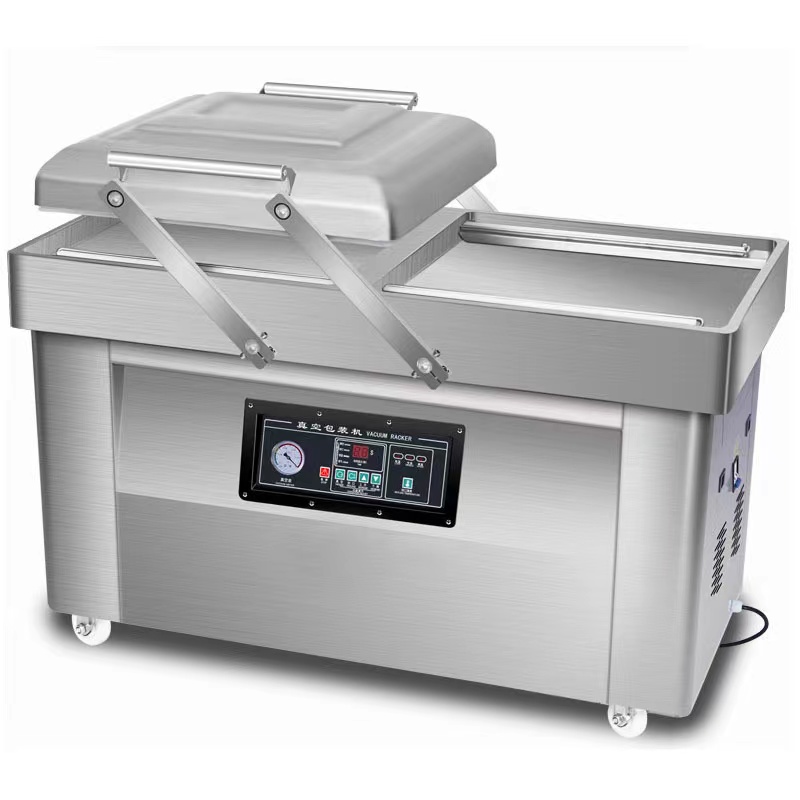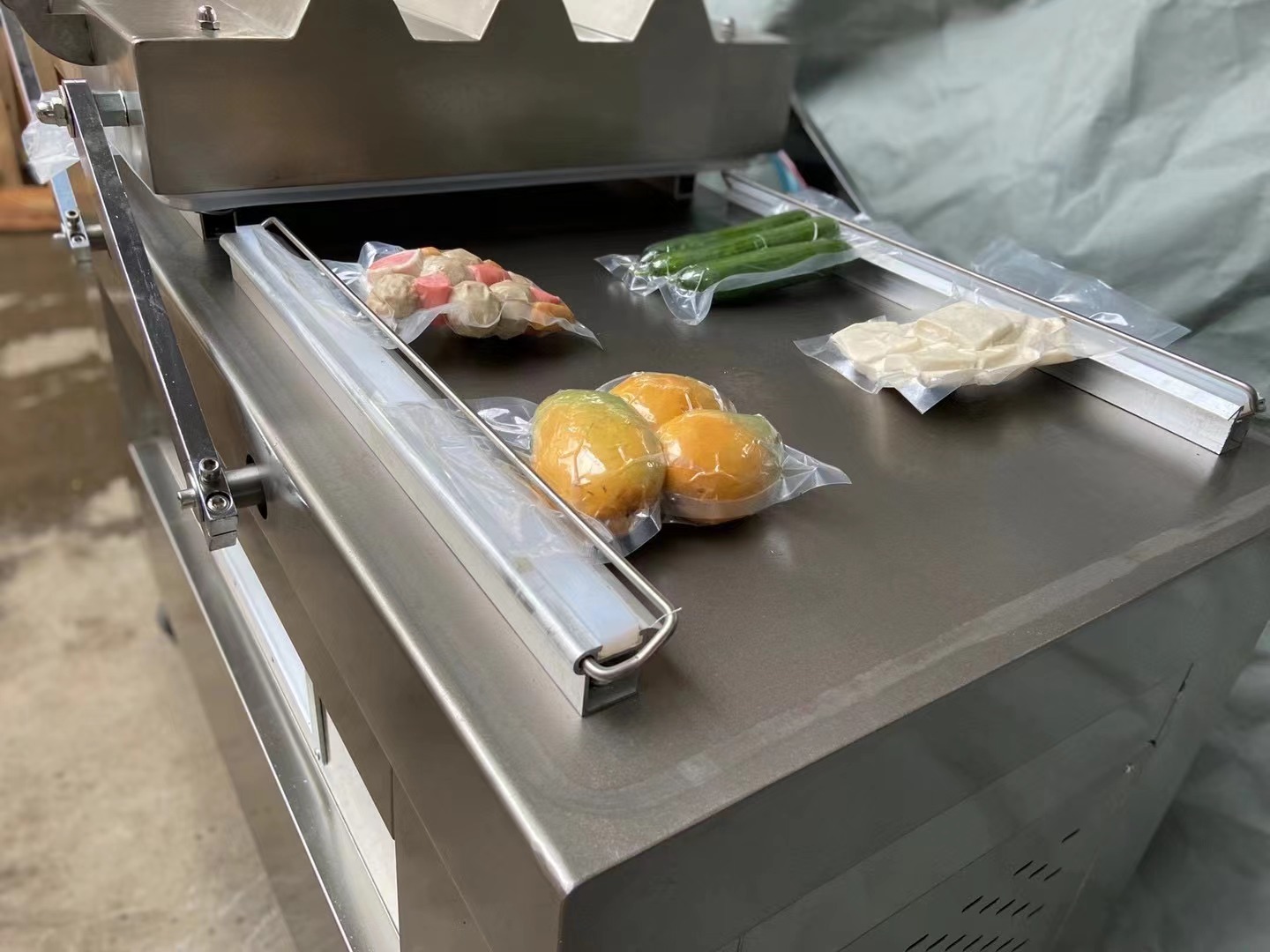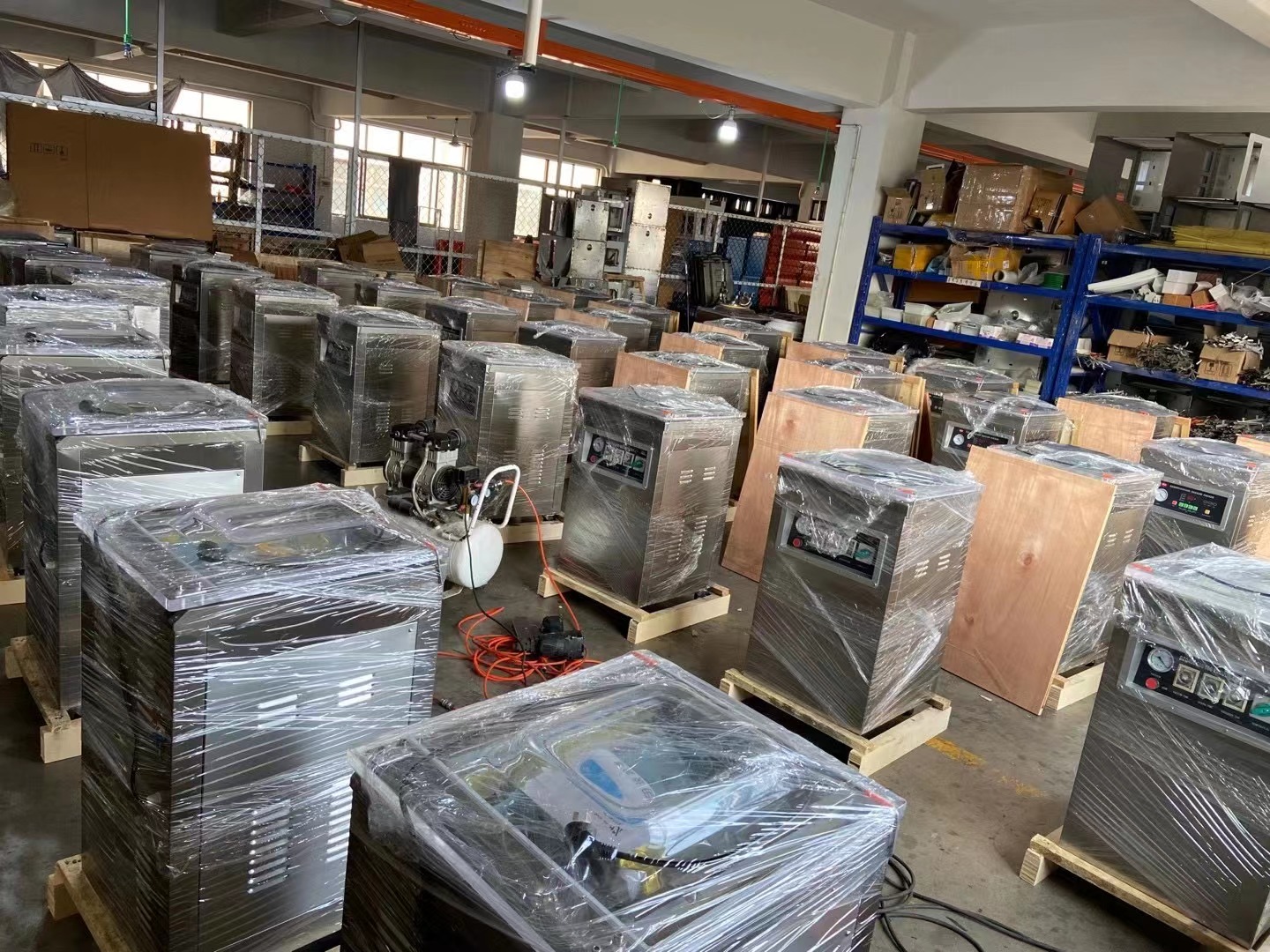Vacuum sealing packing machine

This packaging machine is used for vacuum packaging with packaging materials having a extremely high gas barrier for the purpose of food preservation. Most of these machines seal the bag containing food in the vacuum chamber. The four types of machines are classified by mechanical faculty: nozzle, chamber, skin, and deep-draw type.

Vacuum packaging is a method of packaging where air from the interior of a package is removed in its entirety immediately prior to sealing the package. This involves placing food products in a plastic film package (or potentially a film package made with other polymer materials), removing air from inside the package with a vacuum pump, and then sealing the package (Church & Parsons, 1995).

The materials used for vacuum packaging must be strong enough to withstand the vacuum, flexible enough to form around the food product, and have a very specific level of heat sensitivity. Regarding the heat sensitivity of the material, the material must be sealed during the packaging process, but also suitable for moderate temperatures during cooking (e.g., 75°C). This is especially the situation with the emerging popularity of sous vide cooking of foods.

Vacuum packaging was invented in the 1950s by a German inventor named Karl Busch, who used the discovery for vacuum packaging meat products. Today, vacuum packaging is common for long duration storage of dry foods like cereals, nuts, cured meats, cheese, and smoked fish, as well as short duration storage of fresh foods like vegetables, meats, and liquids. Vacuum packaging of foods offers several distinct advantages for the food industry, mainly associated with the reduction, or even the potential elimination, of atmospheric oxygen. This slows the rate of oxidative reactions (i.e., lipid oxidation and protein oxidation) and limits the growth of aerobic bacteria and fungi.

There are several challenges with the implementation and use of vacuum packaging in the food industry. The first challenge is associated with consumer perception of some food products. For example, consumers of meat products are accustomed to specific color cues of meat products (e.g., fresh beef is characteristically red when exposed to oxygen or stored in an aerobic environment); however, an anaerobic environment causes a change in the chemical state of the protein myoglobin, which causes temporary undesirable color cues for meat products (e.g., fresh beef appears dark red or purple in an anerobic environment) (Suman & Joseph, 2013). Another significant challenge with vacuum packaging is the requirement of synthetic packaging materials (i.e., plastic), as very few biodegradable and bio-based packaging materials are capable of meeting the aforementioned technical requirements to undergo vacuum packaging.

